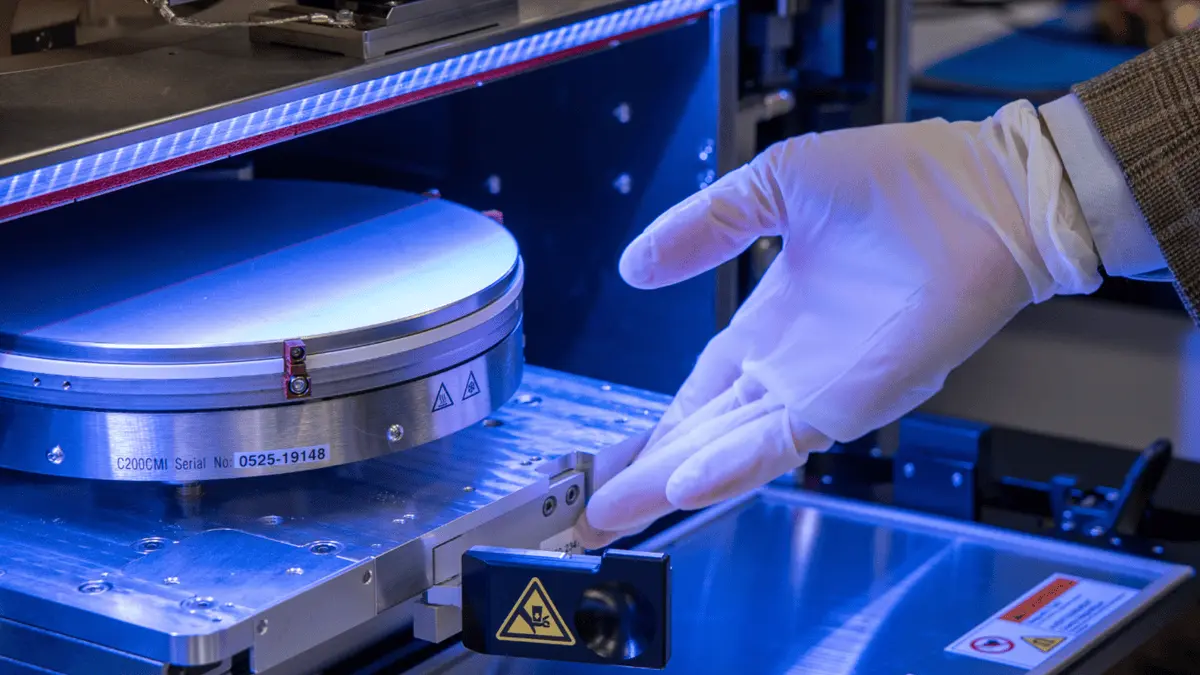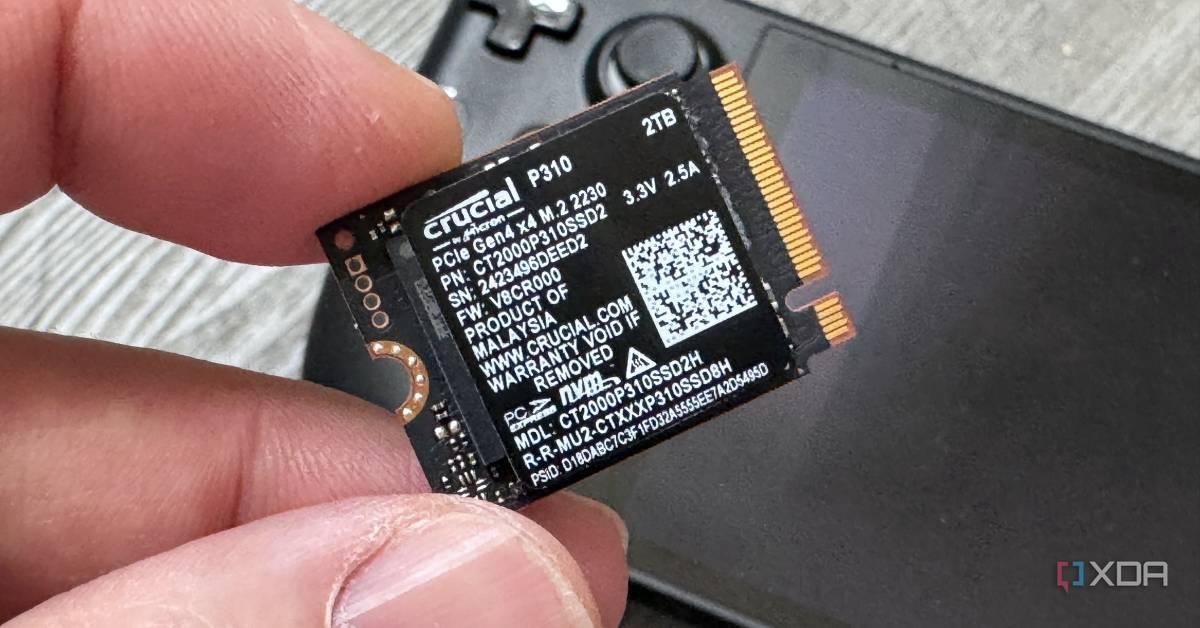AWS Launches In-line Q Developer AI Coding Assistant, Challenging Microsoft's GitHub Copilot
2 Sources
2 Sources
[1]
AWS launches in-line Q Developer AI coding assistant to take on Microsoft's Github Copilot
Join our daily and weekly newsletters for the latest updates and exclusive content on industry-leading AI coverage. Learn More Amazon Web Services (AWS) is making its Amazon Q Developer AI assistant available as an add-on developers can access directly at any point of their coding, within their Integrated development environments (IDEs) such as Visual Studio Code and JetBrains, the company announced today in a blog post authored by Jose Yapur, Senior Developer Advocate at AWS. Simply highlighting text will bring up a list of new Q Developer actions as options, including "Optimize this code", "Add comments", or "Write tests". Selecting any of these, the human developer can enter specific instructions or prompts into a text box and then sit back and relax for a few seconds while Q Developer performs the requested action on its own. See it in action below in an animation posted by AWS today. Powered by Amazon investment Anthropic's Claude 3.5 Sonnet model, the feature aims to streamline workflows, eliminating the need for developers to switch between chat and code windows. A developer's virtual best friend? Originally launched as Amazon CodeWhisperer in 2022, Amazon Q Developer began as a tool for inline code suggestions based on comments and existing code. Over time, its functionality expanded to include an in-IDE chat that allowed developers to generate new code and receive explanations for specific coding tasks. Amazon Q Developer's inline chat takes this concept further by integrating suggested changes directly into the code editor, allowing developers to review and accept modifications instantly. This approach is intended to reduce the interruptions caused by switching between chat windows and code, helping developers stay focused on their tasks. The Claude 3.5 Sonnet model, powering the inline chat feature, offers robust improvements in coding tasks and has achieved a 49% success rate on the SWE-bench benchmark, solving real-world GitHub issues. Integrated with Amazon Bedrock, Amazon Q Developer leverages multiple foundation models, dynamically selecting the optimal model for each task to enhance productivity for its users. The feature, available in the Amazon Q Developer's free tier, exemplifies Amazon's commitment to continuous improvement in developer tools through seamless, behind-the-scenes model updates. Inline chat actions Amazon Q Developer's inline chat feature demonstrates its potential through practical applications like code refactoring and documentation. For instance, a developer can select multiple code methods in their editor, describe the refactoring they need, and the AI will consolidate the methods into a single function with optional parameters. This process is visible in a diff format within the code, allowing users to quickly see which lines will be added or removed. By pressing a key to accept the changes, developers can integrate the modifications immediately, optimizing their workflows. The tool is also useful for documenting legacy code. With a simple prompt, developers can ask Amazon Q Developer to generate descriptive comments throughout a function or algorithm. Inline chat then provides the documentation suggestions directly within the code editor, helping teams maintain consistency in code documentation across large projects. Competing Microsoft's GitHub Copilot Amazon Q Developer's latest feature arrives at a critical time as Microsoft earlier today also expanded its rival GitHub Copilot AI assistant capabilities. Announced at the GitHub Universe conference, the newest Copilot enhancements introduce multi-model support, enabling developers to choose between models such as Anthropic's Claude 3.5 Sonnet, Google's Gemini 1.5 Pro, and OpenAI's GPT4o. Previously, Copilot was restricted to Microsoft and its investment OpenAI's GPT series of large language models (LLMs) and open source models. The newly added support for multiple LLMs allows GitHub Copilot's developer users additional flexibility. Copilot's integration now also extends to Apple's Xcode IDE, providing a broader reach and compatibility with more development environments. In addition, Github Copilot is also launching an integrating directly within Azure, Microsoft's cloud service and rival to Amazon Web Services (AWS), allowing developers to use it when managing their cloud apps, deployments, and builds directly within that environment. AWS and Azure are locked in a heated competition for enterprise customers, especially in the generative AI era. GitHub Copilot Workspace, a new orchestration engine for AI-driven development, allows for seamless transitions from idea to execution, making it easier to address complex coding tasks in an AI-native environment. This shift reflects Microsoft's broader ambitions in the developer tools landscape, aiming to establish GitHub and Azure as the go-to platforms for AI-first software development. It's also notable given that Microsoft has invested directly into Anthropic rival OpenAI, while its cloud rival Amazon has invested directly into Anthropic. Yet Microsoft and Amazon both clearly want to give their cloud customers broad optionality for the LLMs available through either platform, making it more reasonable and even desirable to partner with the competition (or competition's proxies). A fiercely competition landscape for developer dollars Both Amazon and Microsoft are actively working to redefine developer productivity through their AI tools. Microsoft's GitHub Copilot has expanded beyond the confines of single-model support, now enabling developers to choose between multiple AI models for different coding tasks. By integrating Stack Overflow insights and expanding Copilot's reach to Xcode, GitHub is positioning itself as a universal assistant for diverse development environments. Meanwhile, Amazon Q Developer focuses on refining its in-editor experience, reducing friction for developers who need quick, integrated responses to code-related queries. With Claude 3.5 Sonnet, Amazon aims to enhance Q Developer's performance on complex, real-world coding problems. The broader implications of these advancements are significant. As these platforms continue to integrate more sophisticated AI models, developers are experiencing a shift from traditional software engineering workflows to AI-assisted development that promises to reduce repetitive tasks and accelerate innovation. For Amazon and Microsoft, this competition is not only about developer experience but also about gaining traction in the cloud ecosystem. As developers adopt these tools, they may become more committed to the corresponding cloud providers, further cementing Amazon and Microsoft's positions in the enterprise AI market. Looking forward Amazon Q Developer's inline chat provides developers with an efficient, AI-powered alternative for code refactoring, debugging, and documentation. Meanwhile, Microsoft's GitHub Copilot updates underscore a vision for a flexible, model-agnostic AI assistant that spans a variety of development tools and environments. For developers, the takeaway is clear: both Amazon and Microsoft are committed to reshaping how code is written, reviewed, and deployed. With Amazon Q Developer's inline chat available immediately for users of Visual Studio Code and JetBrains, and Microsoft's new Copilot features rolling out this week, developers have a wealth of options to explore as they look to integrate AI more deeply into their coding practices.
[2]
Amazon Q introduces AI-powered inline chat directly in the code editor for developers - SiliconANGLE
Amazon Q introduces AI-powered inline chat directly in the code editor for developers Amazon Q Developer, Amazon Web Services Inc.'s artificial intelligence software development assistant, today announced support for inline chat that combines the ability to invoke assistants within software editors and update code, which allows developers to describe their needs directly and receive responses. Many AI software development tools work as inline code completion and as chat tools in the sidebar. Inline code completion acts by showing suggestions as developers type allowing them to simply accept or reject as they go, saving time. The chat interface helps generate code from developer prompts, but also explains why, as well as assists with improving code, including refactoring or generating tests and documentation. Inline chat allows developers to invoke a chat interface directly within their coding editor and talk to the AI assistant to tell it what they want to do. For example, they can tell it that they want to improve a segment of code directly in place. The benefit is that instead of having to use a sidebar chat interface they can merge the suggestion immediately, rather than copy/paste the changes. "This new capability is ideal for editing an existing file to fix issues, optimize code, refactor code and add comments," said Yose Yapir, senior developer advocate at AWS. "Inline chat is really powerful and helps me do more complex things quickly and accurately." Under the hood, Q Developer is built on Amazon Bedrock, the company's managed service for building AI applications and customizable high-performance foundation models, including those from Amazon and other leading AI companies. To provide the best experience for developers, Amazon said the inline chat is powered by the latest version of Anthropic PBC's Claude 3.5 Sonnet, which launched a week ago. The newest version of Sonnet is one of the best-performing AI models on coding charts, exhibiting wide-ranging improvements for industry benchmarks. It is currently the top model on the SWE-bench chart, solving 49% of the verified dataset, which is 500 real-world GitHub issues. "By powering the new inline chat capability with this cutting-edge Anthropic model, Amazon Q Developer is delivering an AI assistant that can help you save time while tackling your most complex coding challenges with unparalleled capabilities," Yapir said. Using the new inline chat is designed to be simple, rather similar to involving another developer in the process. Developers need only select a code segment and invoke Q Developer using ⌘ + I on Mac or Ctrl + I on Windows. A small chat interface will appear in the editor where the developer can type a prompt, such as "Add documentation including description throughout the code." The assistant will then analyze the code and create the appropriate comments in the code. Once it's completed, the user can review the work of the AI assistant and accept or reject the changes. In most cases, it will create a comment block at the beginning of the code documenting the software, to explain how it functions, and then place inline elements to explain anything that might need additional attention. Although it's possible to generate documentation using a chat interface, it would force the user to copy and paste each comment block manually and laboriously. This makes it easy and simple. The AI-assisted inline chat capabilities are available for Microsoft Corp.'s Visual Studio Code and JetBrains s.r.o. independent development environments. Developers can access the new feature through Amazon Q Developer's Free tier.
Share
Share
Copy Link
Amazon Web Services introduces an AI-powered inline chat feature for its Q Developer coding assistant, directly competing with Microsoft's GitHub Copilot in the AI-assisted software development market.

AWS Unveils In-line Q Developer AI Coding Assistant
Amazon Web Services (AWS) has launched a new feature for its Amazon Q Developer AI assistant, introducing an in-line chat capability that allows developers to access AI-powered coding assistance directly within their Integrated Development Environments (IDEs)
1
. This move positions AWS to compete more directly with Microsoft's GitHub Copilot in the rapidly evolving AI-assisted software development market.Key Features of Amazon Q Developer
The new in-line chat feature enables developers to highlight code segments and access a range of AI-powered actions, including code optimization, comment addition, and test writing
1
. Powered by Anthropic's Claude 3.Sonnet model, the tool aims to streamline workflows by eliminating the need for developers to switch between chat and code windows1
2
.Amazon Q Developer's functionality has expanded significantly since its initial launch as Amazon CodeWhisperer in 2022. The tool now offers:
- Inline code suggestions based on comments and existing code
- In-IDE chat for generating new code and explaining coding tasks
- Integrated changes directly into the code editor
- Dynamic selection of optimal AI models for each task through Amazon Bedrock integration
1
Practical Applications
The in-line chat feature demonstrates its utility through various practical applications:
- Code refactoring: Developers can select multiple code methods, describe the desired refactoring, and the AI will consolidate them into a single function with optional parameters
1
. - Legacy code documentation: With a simple prompt, the tool can generate descriptive comments throughout a function or algorithm, helping maintain consistency in code documentation across large projects
1
2
.
Competition with GitHub Copilot
The launch of AWS's in-line Q Developer feature coincides with significant enhancements to Microsoft's GitHub Copilot:
- Multi-model support: GitHub Copilot now allows developers to choose between models such as Anthropic's Claude 3.Sonnet, Google's Gemini 1.Pro, and OpenAI's GPT4
1
. - Expanded IDE integration: Copilot now supports Apple's Xcode IDE, broadening its compatibility
1
. - Azure integration: Developers can use Copilot when managing cloud apps, deployments, and builds directly within Microsoft's Azure environment
1
.
Related Stories
Impact on Developer Productivity
Both Amazon and Microsoft are actively working to redefine developer productivity through their AI tools:
- Seamless integration: By integrating AI assistance directly into the coding environment, both companies aim to reduce context switching and improve focus
1
2
. - Diverse model support: The inclusion of multiple AI models allows for more flexible and tailored coding assistance
1
. - Cloud platform integration: Both AWS and Azure are leveraging their AI coding assistants to enhance their cloud service offerings
1
.
Technical Underpinnings
Amazon Q Developer is built on Amazon Bedrock, a managed service for building AI applications using customizable foundation models
2
. The in-line chat feature is powered by the latest version of Anthropic's Claude 3.5 Sonnet, which has shown impressive performance on coding benchmarks, solving 49% of the verified dataset on the SWE-bench chart2
.As the competition for AI-assisted software development tools intensifies, developers stand to benefit from increasingly sophisticated and integrated coding assistants. The race between AWS and Microsoft highlights the growing importance of AI in shaping the future of software development practices and cloud services.
References
Summarized by
Navi
[1]
Related Stories
AWS Enhances Amazon Q Developer with AI-Powered Features for Comprehensive Software Development Lifecycle
04 Dec 2024•Technology

Amazon Q Developer Expands Language Support, Enhancing Global Accessibility for Coders
10 Apr 2025•Technology

AWS Kiro Powers Launch with Stripe, Figma, and Datadog to Fix AI Coding Assistant Bottleneck
04 Dec 2025•Technology

Recent Highlights
1
OpenAI releases GPT-5.2 AI model after code red memo targets Google's Gemini 3 threat
Technology

2
Disney invests $1 billion in OpenAI, licenses 200+ characters for Sora AI video generator
Technology

3
OpenAI faces wrongful death lawsuit after ChatGPT allegedly fueled murder-suicide tragedy
Policy and Regulation





